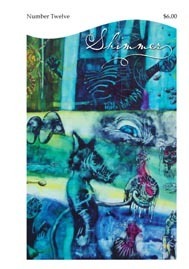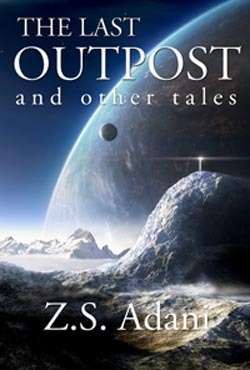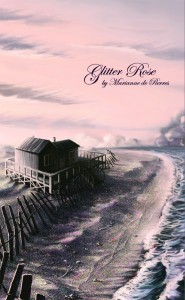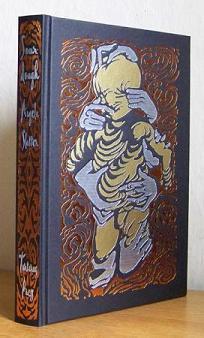Angela Slatter's Blog, page 198
October 14, 2010
Authors and Books: A Public Service Announcement
 I've had a few of the same conversations in the past month and I generally, eventually, take that as a sign to 'blog on the theme'. So, today's theme is this one: authors usually don't have boxes of books in their garage, waiting for you to come and ask them for a free copy*.
I've had a few of the same conversations in the past month and I generally, eventually, take that as a sign to 'blog on the theme'. So, today's theme is this one: authors usually don't have boxes of books in their garage, waiting for you to come and ask them for a free copy*.
Here's the thing: as an author the number of author copies of your book you get will depend entirely on your status, earning power and, sometimes, the clauses you've specified in your contract.
Relatives and close friends are particularly bad for this – and it's really bad form especially if they've seen you go through the lean times when you were eating the cardboard remains of the cracker packet coz it was all that was left in the pantry and it kinda still smelled like the crackers. The assumption that authors all make big money and can suddenly start bathing in Moët is sadly off-base. After your first book, you might be able to afford some butter to spread on the cardboard, but there will be no jam for an while to come and certainly no caviar.
So, if an author offers you a free copy of their book, say "thank you" and be grateful. But, for the love of all that's holy or otherwise, please don't go sidling up and saying "Sooooo, how about a free copy of your book, grandma/uncle/distant cousin's dog manicurist?"
It is bad form. It is cheap and nasty. It sucks.
Put your hand in your pocket and go buy a copy of the book so the impoverished author gets her/his miniscule royalty payment and can afford to buy real crackers. Support the writer and the publishing industry.
* Unless they have self-published and then they won't be wanting to give you a copy for free, coz, y'know, it's their bread and butter.
PS: I believe the photo is a Spencer Platt.








October 13, 2010
Goodness that Shimmers!
Always happy to post about Shimmer!
The stories are wondrous and the art is glorious.
We released our first issue in 2005. We've gotten stronger with each issue, and Issue 12 contains wonders and marvels, from Peter M. Ball's punk-not-emo teenage werewolf story, to Josh Storey's gorgeous take on the tale of Orpheus, to Monica Byrne's story of stigmata in a colony on a distant planet. We've got an imaginative reinterpretations of Little Red Riding Hood and the Wizard of Oz, and a sweet little zombie love story. And more! We packed 9 stories into this issue.








The Truth About Donuts
Via Sean Williams, an exposé about donut hunting by Robyn Tatlow-Lord 
Lives here.
Why I am awake this early? There is a damnable bird in a tree outside my window twittering -.-; it's just gone 4.30am. Get a clock, Nature! *grumble*








October 12, 2010
Meanwhile, over at SF Signal: The Dream Anthology
 The delightful John DeNardo at SF Signal asked a few people to pick and choose for their dream anthology, citing what you'd choose and why. The answers were so big, they had to split the post in two.
The delightful John DeNardo at SF Signal asked a few people to pick and choose for their dream anthology, citing what you'd choose and why. The answers were so big, they had to split the post in two.
Mine is here, as is that of Nancy Kress (hallowed be her name), Violet Malan and other interesting folk.
Part Two is here.








A Drive-by from The Last Outpost: Z. S. Adani
 Sophy Adani's collection, The Last Outpost and Other Tales, will be published by Hadley Rille Books in 2011. Her short fiction has appeared in journals such as The Tangled Bank, Origins, Alternative Coordinates, Something Wicked, to name but a few. She has also edited Destination Futures with Eric T. Reynolds. Here she speaks about being a writer, themes, Frank Herbert and custard-filled donuts.
Sophy Adani's collection, The Last Outpost and Other Tales, will be published by Hadley Rille Books in 2011. Her short fiction has appeared in journals such as The Tangled Bank, Origins, Alternative Coordinates, Something Wicked, to name but a few. She has also edited Destination Futures with Eric T. Reynolds. Here she speaks about being a writer, themes, Frank Herbert and custard-filled donuts.
1. I first knew I was a writer when …
. . . I got my third acceptance, although the very first one was the most memorable. Still, I had this thought at the back of my mind that one acceptance could be a fluke. Also, by then the rejections were piling up, and it took some effort to keep sending the stories out. That part was more difficult than writing; it still is.
But even before that, I've always been writing. Being a visual person, my creative outlet was painting at first, and every painting had a story attached to it. They all clamored in my head for years, decades, until one day I felt that my head would explode. And that's when I started writing seriously.
2. I love/hate writing to a theme …
. . . love it when I can come up with a plot that has a positive resolution. Or at least there is a shred of hope in the end. I find the end-of-everything themes too depressing, especially when it's the end of the Earth or Humanity or the universe. I love futuristic themes in which biology and astronomy influence the characters' lives.
3. If I could be any other writer than myself, I would be …
. . . Frank Herbert comes to mind, even though I don't try to emulate his style. I love world building, and his Dune series has that, carefully interwoven within the factions of galactic society, human nature, and human adaptation. The combination of his world building, character development, and plot took my breath away. I have read the series three times already and I'm sure I will read it again.
4. A story can always be improved by the addition of …
. . . wit or humor. And the proper placement of commas. World building. Emotional depth of characters. A program that would delete overused phrases and pedantic exposition.
5. Donuts or danishes?
. . . if it has to be one of these, I'd say donuts with custard filling, but I prefer custard filled puff pastry.
She blogs here.








Behold: The Glory of Catherynne M. Valente
Where is my parrott
This eve I am captaining the AWMonline writing race … my sole bitterness is that I have not been furnished with a pirate hat and a parrott.  *grumble*
*grumble*








October 11, 2010
Year of the Novel – Trent Jamieson
El Trento aka The Nicest Man In Spec-Fic (he of Death Most Definite) is teaching a second YoN class at QWC. I've been one of his students in the first round and it's been enormously helpful in getting my "stuff" together and structuring the novel and also for general learning of craft stuff. Highly recommended.
Go to investigate further. It is a QWC members only course … so join!








A Balm for All Ills
I give you: The Lammington. Sponge cake soaked in choclit, then rolled in dessicated coconut. Sometimes split and filled with jam. Or cream.








Dan Simpson is running a competition
He's giving away a copy of Sourdough and Other Stories, Marianne De Pierres' Glitter Rose and The Arrival and Sketches from a Nameless Land by Shaun Tan. Go here!





























